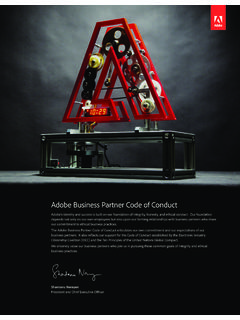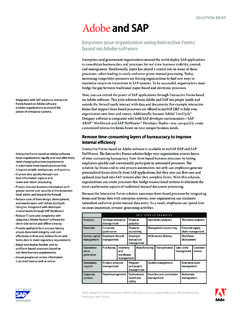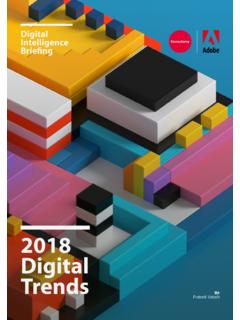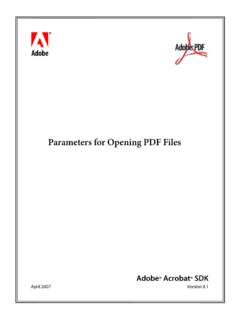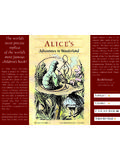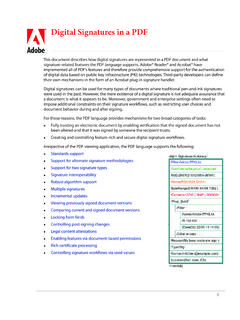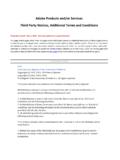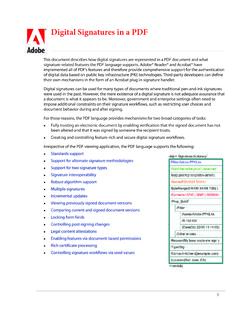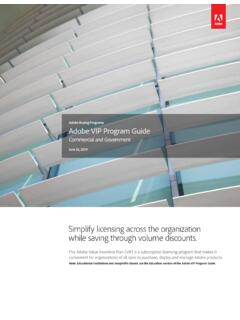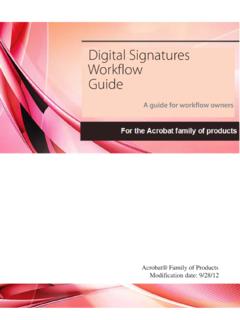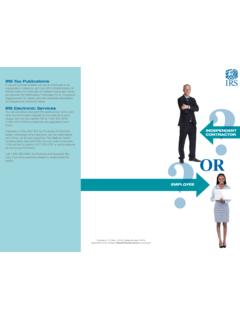Transcription of Adobe's Check-in Toolkit
1 We ve developed a number of guides and worksheets to help make Check-in successful. They align to the three phases of Check-in Expectations, Feedback, and Development. The following documents are enclosed in this Toolkit . Expectations Expectations discussion guide for employees Expectations discussion guide for managers Expectations worksheet Feedback Feedback discussion guide for employees Feedback discussion guide for managers Development Development discussion guide for employees Development discussion guide for managers Individual development planAdobe's Check-in ToolkitRole Modeling check -inLeading@AdobeDirections for using this guide: These discussion guides are intended to help provide a format and talking points for employees and people managers during check -ins.
2 The guides are organized by the three steps of Check-in : Expectations, Feedback and Development and provide suggestions for how to have an effective discussion. They are not intended to be a script, but to provide guidelines to prepare employees and people managers before, during and after the Check-in practices for check -inThe purpose of Check-in is to make sure employees' expectations are clear, share feedback, and discuss development needs to enhance their performance. The flow of Check-in follows three core steps:1. Expectations: First, agree what is expected of employees for the year in terms of deliverables, behavior and Feedback: Next, provide frequent, two-way feedback to see how employees are progressing against expectations and let managers know if they could be doing something differently to better support the Development: Then, when employees know how they are performing, they can plan actionable goals in terms of learning, career and should check -ins happen?
3 Managers should set up a regular cadence of check -ins for all employees that fits the needs of their team, but the following guidelines are recommended: check -ins should be scheduled at least once a quarter and typically, are 60-90 minutes long. Expectations should be set in a Check-in at the beginning of Q1 to clarify objectives for the year ahead. Feedback can be provided throughout the year, not only in check -ins. Development-focused check -ins are driven by the employee and should be scheduled when they feel appropriate. Typically, development conversations may happen once or twice per Discussion Guide For EmployeesThis work is licensed under a Creative Commons Attribution-NonCommercial-ShareAlike International 2010-2015 Adobe Systems Incorporated.
4 All rights : Discussion Guide for EmployeesGuidelines: Take time to do this well: Clear expectations are key to an effective relationship with your manager. Use the expectations worksheet to start mapping out your goals. Come to the meeting prepared to review a draft of your SMART goals. Remember: Expectations must be tangible and measurable, not just aspirational. Ask a lot of : Finalize your expectations and share with your manager. Before your next Check-in , reflect on progress made. What has been harder/easier than you thought? Regularly ask for business context. Regularly ask for informal feedback, not only in your Check-in meetings. Over the next period of time ( sprint, quarter), what are the critical priorities that we must accomplish?
5 check your understanding of the business context: How does our team support Adobe? What are your big bets for the next year? What key deliverables should I aim for this year? 1. ContextReview your expectations worksheet with your manager and complete your goals together: Do you think these goals are stretching enough for me? Am I being unrealistic? How will I be measured on these? Are these properly aligned to the business goals? If not, how can I ensure that they are? 2. SMART Confirm how often you would like to review progress: weekly/monthly/quarterly. Confirm your immediate next steps, ( , finalize SMART goals). Take the opportunity to double- check your understanding of what is expected of ReviewHave specific tasks tied to the expectations.
6 Not just what will be achieved, but HOW. From your experience, what obstacles should I anticipate? Who else should I connect with to help achieve these expectations? What other resources do you think I will need? 3. ObstaclesRole Modeling check -inLeading@AdobeDirections for using this guide: These discussion guides are intended to help provide a format and talking points for employees and people managers during check -ins. The guides are organized by the three steps of Check-in : Expectations, Feedback and Development and provide suggestions for how to have an effective discussion. They are not intended to be a script, but to provide guidelines to prepare employees and people managers before, during and after the Check-in practices for check -inThe purpose of Check-in is to make sure employees' expectations are clear, share feedback, and discuss development needs to enhance their performance.
7 The flow of Check-in follows three core steps:1. Expectations: First, agree what is expected of employees for the year in terms of deliverables, behavior and Feedback: Next, provide frequent, two-way feedback to see how employees are progressing against expectations and let managers know if they could be doing something differently to better support the Development: Then, when employees know how they are performing, they can plan actionable goals in terms of learning, career and should check -ins happen? Managers should set up a regular cadence of check -ins for all employees that fits the needs of their team, but the following guidelines are recommended: check -ins should be scheduled at least once a quarter and typically, are 60-90 minutes long.
8 Expectations should be set in a Check-in at the beginning of Q1 to clarify objectives for the year ahead. Feedback can be provided throughout the year, not only in check -ins. Development-focused check -ins are driven by the employee and should be scheduled when they feel appropriate. Typically, development conversations may happen once or twice per Discussion Guide For People ManagersThis work is licensed under a Creative Commons Attribution-NonCommercial-ShareAlike International 2010-2015 Adobe Systems Incorporated. All rights reserved. Explain how the team fits into the business unit and the broader business. Confirm the overarching goals for Adobe this year. Be transparent and explain what is expected of you as a manager of this team.
9 Explain your big bets for the next that the goals the employee has drafted are SMART and complete them together: "What will success look like for this goal? How will these goals stretch you? What specific outcomes will these produce? Is this timeframe realistic? How do these goals align with the business/team goals?" When and how shall we Check-in to review progress? Explain that expectations may need to evolve if the broader business goals change. Clarify that you will hold your employee accountable to these expectations, so it s important for them to let you know if they need to revisit them. Ensure the employee has specific actions tied to the expectations. Not just what will be achieved, but HOW.
10 What obstacles could get in the way of these goals? How will you plan to overcome these? How can I help? EXPECTATIONS: Discussion Guide for People ManagersGuidelines: Take time to do this well: Clear expectations are key to an effective relationship with your team. As a manager, you will drive the expectation setting process. check you have clarity of your own expectations before having this conversation. Remember: Expectations must be tangible and measurable, not just : employee completes expectations worksheet. Evaluate and refresh throughout the year: Set expectations at the beginning of the fiscal year and review every month or quarter. Set up recurring calendar invites for Check-in .
